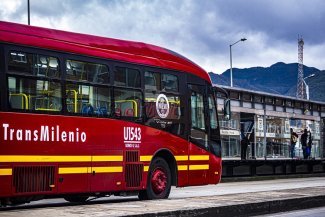Preventing the disappearance of tuna has become a herculean task for the international community, which has spent decades trying to regulate catches, in vain.
Unbeknownst to many western dining tables until just a few decades ago, tuna has today become one of the most consumed fish in the world. The rapid rise in demand, however, has put several species of tuna on the verge of extinction, and overfishing threatens an industry that has an annual turnover of US $42 billion dollars, according to The Pew Charitable Trusts.
Preventing the disappearance of tuna has become a herculean task for the international community, which has spent decades trying to regulate catches, in vain.
In 2015, the environmental organisation WWF warned in a report that the stocks of scombridae, the family of fish to which tuna belong, had fallen by 74 per cent between 1974 and 2012. According to the International Union for the Conservation of Nature, the most affected species is Thunnus maccoyii (Southern bluefin tuna) which is critically endangered, while the Atlantic bluefin tuna is endangered. Two other species, Thunnus obesus (Bigeye tuna) and Thunnus orientalis (Northern bluefin) are rated as vulnerable, while two more are near threatened: Thunnus alabcares (Yellowfin tuna) and Thunnus alalunga (Albacore tuna).
“The tuna industry is difficult to monitor because everything happens out at sea,” says Anchalee Pipattanawattanakul, the ocean campaigner for Greenpeace Southeast Asia. She explains that the lack of supervision often leads to abusive practices such as overfishing or the bycatching of other marine species.
Tunas are a highly migratory species that travel thousands of miles in the course of their lives, making it even more difficult to manage stocks. In order to coordinate international efforts, regulatory frameworks for fisheries management have been negotiated since the 1960s, leading to the current Regional Fisheries Management Organisations (RFMOs), five of which specialise in tuna.
“It’s not that the [RFMOs] system does not work, but it does not work fast enough,” says Amanda Nickson, director of the global tuna conservation team at The Pew Charitable Trusts (PCT). “Clearly what is needed [at this time] is to rapidly put in place concrete steps to regulate Fish Aggregating Devices.”
Fish Aggregating Devices (FADs) have been both a panacea for the fishing industry and the death knell for tuna. From rudimentary floating rafts to sophisticated devices, FADs are artifacts that create fake shelters for fish and make it possible to catch large quantities of fish easily. Their high productivity has resulted in a rapid growth in their use. In 2013 alone, 81,000 to 121,000 of these devices were deployed, 14 per cent more than in 2011, according to data from the PCT.
Currently, FADs account for about half of total tuna catches and have been a major contributor to declining global tuna stocks. “The problem with FADs is not that they are necessarily bad in themselves but [the end result depends] on the rules on how and when they can be used,” Nickson continues.
Another major problem in the industry, says Greenpeace’s ocean campaigner, is transhipment at sea, a practice that allows large fishing vessels to unload their merchandise into smaller boats without having to return to port and therefore spend longer at sea.
Mother ships can thus spend several years on the high seas without touching land and without any inspection by independent agents. “It should be banned because it is a huge loophole in the regulations governing what happens at sea,” says Anchalee. In his view, transhipments should only be allowed if they are monitored by independent observers, but their position would be “very delicate because it would be in a hostile environment without external supervision.”
Traceability: a new tool for sustainability
For decades, efforts in sustainability have focused primarily on controlling tuna stocks to prevent them from reaching the brink of extinction. Consumers, environmentalists and the media now focus on the responsibility of governments and companies to improve traceability.
“If you can trace where your food is coming from, you can understand whether it has been caught legally, and you know what kind of labour was used on the boats; you can give your customers confidence in the product they are buying,” says Darian McBain, director of Sustainable Development at Thai Union, the world’s leading canned tuna company, which has committed to making 75 per cent of its production sustainable in 2020.
Thai Union is adapting its production line, says McBain, to meet the requirements of the Marine Stewardship Council (MSC), the industry’s leading seal of approval. The use of sustainability seals by the industry has increased rapidly over the past few years and the MSC alone had more than 17,000 products certified by the end of 2015.
“The industry now realises that it depends on healthy oceans. It has no other option because tuna cannot be farmed,” says Anchalee.
However, environmental groups such as Greenpeace have warned that the MSC’s monitoring of catches is not strict enough and still allows fishing in areas with depleted reserves or using systems that record bycatch. “If tuna companies can get MSC certification it will mean a rapid improvement in [sustainable] management but it will not mean that all the problems have been solved. That will take longer,” adds Nickson.
Digital traceability is another strategy that the industry is implementing to improve control over the origin of the tuna that enters its production chain. Thus, unlike the traditional system based on paper documentation, digital traceability aims to turn the information into electronic data that can be consulted at any time to know which ship the raw material is carried in and the conditions in which the fish has been caught. The system aims to help companies to identify the raw material obtained illegally or that has not been duly registered.
The borderline situation of tuna stocks has been the focus of much of the criticism of the fishing industry for decades. Added to this are the appalling working conditions in the sector, which have begun to be uncovered in recent years, especially in Thailand, where the industry has been linked to people trafficking and conditions akin to slavery.
“There are two main problems in the industry: stock levels and slave labour. But the industry is only focused on solving the first,” says Anchalee. Thus, a recent report from the organisation stated that there had been hardly any studies on human trafficking in the tuna industry, although there were clear indications. “Even if sustainable tuna is achieved, it will still be caught by slaves and we have to consider if we can call that sustainable,” concludes Anchalee.










